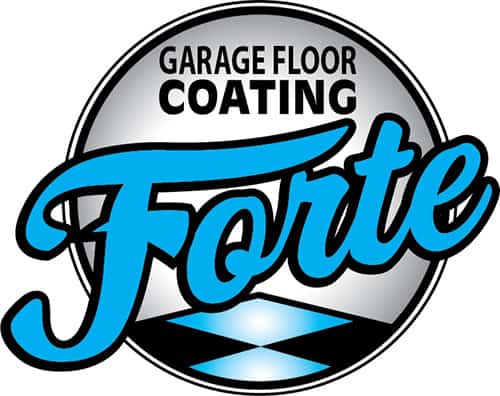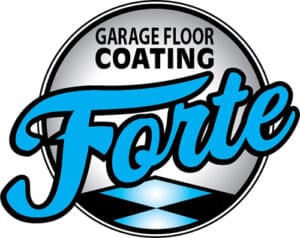Epoxy floors typically cure within 24 to 72 hours under ideal conditions. This range, however, can vary significantly depending on environmental factors, the specific epoxy formula used, and the application technique. Quick answers don’t always cover the complexities involved in epoxy curing, which is why understanding the process in detail can lead to better results and longevity of your flooring.
Understanding Epoxy Coatings and Cure Time
Epoxy coatings are renowned for their durability and aesthetic appeal, providing a hard, protective layer that is resistant to wear and tear in both residential and commercial settings. The curing time, the period during which the coating transitions from a liquid to a solid, is critical for ensuring the coating achieves its full performance capabilities. Prolonged cure times can be advantageous as they allow the epoxy to develop a stronger bond with the substrate, resulting in a more durable coating.
Factors Influencing Epoxy Cure Time
Several key factors impact the cure time of epoxy flooring, each playing a crucial role in how quickly and effectively the epoxy sets and hardens. Understanding these factors can help in planning and executing an epoxy flooring project with better precision:
- Ambient Temperature and Humidity Levels: The air temperature and humidity conditions greatly influence the curing process. Ideal temperature for most epoxies is between 70°F and 85°F, with humidity levels preferably below 60%.
- Concrete Surface Preparation: Proper preparation of the concrete slab is vital. The surface must be clean, dry, and free of contaminants to ensure good adhesion and uniform curing.
- Type of Epoxy Used: Different formulations of epoxy resin have different curing times. For example, water-based epoxies typically have longer drying times compared to solvent-based options.
- Environmental Conditions: The overall environment, including direct sunlight, air flow, and presence of moisture, can affect the epoxy’s ability to cure properly.
- Chemical Composition: The specific chemicals and additives used in the epoxy mixture can alter the cure time. Additives to accelerate or retard curing can be used depending on the project requirements.
- Application Process: How the epoxy is mixed and applied also affects the cure time. Inaccurate mixing or incorrect application can lead to longer cure periods or improper curing.
- Curing Epoxy in Different Climates: Epoxy cures differently in warm environments versus cold environments. Cooler temperatures can significantly slow down the chemical process necessary for curing.
By carefully managing these factors, you can ensure a smoother and more efficient curing process for your epoxy flooring project.
Temperature and Environment: The Key to Epoxy Cure Speed
Temperature is the most influential factor in the curing speed of epoxy. Ideal curing conditions are typically between 70°F and 85°F with a relative humidity below 60%. Temperatures outside this range can drastically alter the rate of cure; warmer temperatures accelerate the chemical process, while cooler conditions slow it down. The overall environment, including factors like air circulation and exposure to UV light, also plays a crucial role in curing times.
Surface Conditions and Their Impact on Epoxy Cure Time
The surface conditions of the concrete play a pivotal role in the drying process of epoxy coatings. Questions often arise regarding the readiness of the surface—whether it is clean, level, and moisture-free, as any deviations can lead to significant issues in the curing process. Imperfections such as dust, oil, or unseen moisture can prevent the epoxy from adhering correctly, resulting in a curing process that is uneven or incomplete. This can be especially problematic in areas expected to handle heavy foot traffic, where durability and uniformity are critical.
Dry Time for Different Epoxy Applications
The dry time for epoxy applications can vary significantly depending on the type of epoxy used and the environment in which it is applied. Epoxy products designed for heavy traffic areas in commercial settings may have different drying times compared to those used for residential garage floors. The application process and the ambient temperature play crucial roles in determining the drying times. For instance, water-based epoxies generally take longer to dry in cooler temperatures, whereas solvent-based epoxies might set more quickly but require good ventilation.
Epoxy Garage Floor: Cure Time and Foot Traffic Readiness
For epoxy garage floors, the cure time before it can handle light foot traffic is generally around 24 hours. However, this can extend up to 72 hours or more before it is ready for heavy traffic or vehicle traffic, depending on factors such as air temperature, floor temperature, and the specific epoxy product used. Ensuring proper preparation of the concrete surface and considering environmental conditions like humidity and temperature will help achieve optimal curing and a durable coating that withstands the demands of a garage environment.
Epoxy Floor Coating in Basements: How Cold Temperatures Affect Cure Time
Epoxy floor coatings in basements are particularly susceptible to extended cure times due to the naturally cooler temperatures and potential moisture issues prevalent in such environments. The cold slows down the chemical reaction necessary for the epoxy to cure, which can complicate the drying process. Maintaining an optimal temperature and humidity level is crucial to avoid prolonged curing periods, which can delay use and potentially impact the flooring’s performance under heavy foot traffic.
Advanced Tips for Speeding Up Epoxy Cure Time
To accelerate the epoxy-curing process, especially in settings where time constraints are critical, consider using faster-curing epoxy mixtures or adding accelerators that enhance the chemical reaction. Employing heat lamps, space heaters, or increasing the ambient temperature can effectively reduce the curing time. It’s also essential to maintain consistent environmental conditions to prevent fluctuations that might affect the curing process. Implementing these strategies can lead to faster drying and a quicker return to service without sacrificing the quality and durability of the epoxy flooring.
Using Additional Heat to Accelerate Epoxy Curing on Concrete Floors
In cooler climates or during cold seasons, the use of additional heat sources can be a vital strategy to accelerate the curing process of epoxy on concrete floors. Space heaters, heat lamps, or even heated blankets can be strategically placed to maintain a consistent and ideal temperature that ensures the epoxy cures properly. This method helps address the slow drying process that often accompanies low temperatures, ensuring that the flooring is ready for use without delay, particularly in commercial settings where downtime can lead to operational issues.
How Chemicals in Epoxy Resin Influence Cure Time
The chemical composition of epoxy resin plays a critical role in determining its cure time. The specific blend of chemicals and additives within the epoxy mixture directly impacts the speed and effectiveness of the curing process. Fast-curing epoxies, for instance, may contain accelerators that speed up the chemical reaction, reducing the time needed for the epoxy to harden sufficiently. Conversely, some formulas might include retarders to extend the cure time, allowing for a longer working period which can be crucial in larger or more complex installation processes.
Additionally, the presence of certain chemicals can enhance the epoxy’s resistance to environmental factors such as moisture evaporation and humidity conditions. This is particularly important in environments like basements or commercial spaces, where conditions can vary significantly. Understanding the interaction between these chemicals and the ambient temperature or humidity levels can help in choosing the right type of epoxy for specific conditions, ensuring a smoother, faster drying process and a more durable, glossy finish.

